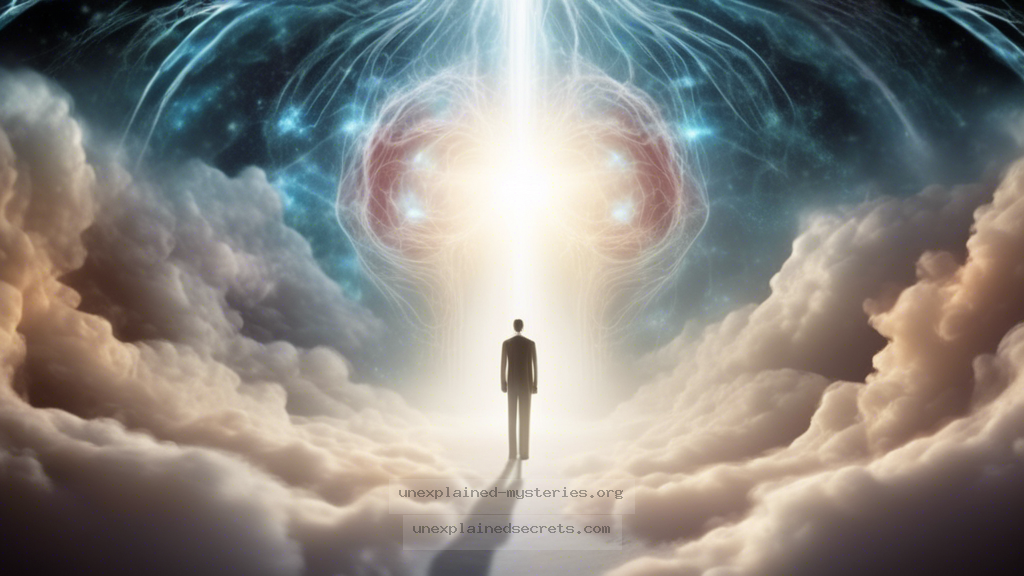What Do Near-Death Experiences Reveal About Consciousness Beyond Clinical Death?
What Do Near-Death Experiences Reveal About Consciousness Beyond Clinical Death?
The phenomenon of Near-Death Experiences (NDEs) has captivated researchers, doctors, and the general public alike. These experiences, often described as life-altering, challenge our understanding of consciousness and the afterlife. But what do these reports reveal about consciousness beyond clinical death? This question is not merely a philosophical inquiry; it has profound implications for our understanding of life, death, and what may lie beyond. In this comprehensive exploration, we will delve into the historical context, core concepts, evidence, and future research directions related to NDEs.
Historical Context of Near-Death Experiences
The concept of NDEs is not a modern phenomenon. Historical records suggest that similar experiences have been documented for centuries across various cultures. Ancient texts, including those from the Greeks and early religious writings, reference experiences that closely resemble contemporary accounts of NDEs. Notably, the Tibetan Book of the Dead describes a state of consciousness after death, outlining the experiences of the soul as it transitions from life to the next realm.
In the 20th century, the term “Near-Death Experience” was popularized by Dr. Raymond Moody, who published “Life After Life” in 1975. This groundbreaking work gathered numerous anecdotal accounts from individuals who had been clinically dead or close to death. Moody identified common elements in these experiences, such as feelings of peace, out-of-body experiences, and encounters with light or deceased loved ones. His work opened the door for scientific inquiry into what these phenomena might mean regarding consciousness.
Core Concepts: What Are Near-Death Experiences?
Near-Death Experiences are characterized by a variety of phenomena that occur when a person is either clinically dead or close to death. Some of the most frequently reported elements include:
- Out-of-Body Experiences (OBEs): Individuals often report a sensation of floating outside their bodies and observing their surroundings from an elevated perspective.
- Life Review: Many report a vivid re-experiencing of significant life events, often accompanied by profound emotional insights.
- Encounters with Beings of Light: Numerous accounts include meeting a radiant presence that some interpret as a divine figure or the essence of deceased friends and family.
- Feelings of Peace: A common sentiment among those who have experienced NDEs is a profound sense of tranquility and unconditional love.
These core components raise essential questions about the nature of consciousness and whether it exists independently of the physical body. Are these experiences purely neurological responses to trauma, or do they suggest a continuity of consciousness beyond physical death?
Evidence and Practical Implications of NDEs
Scientific investigation into NDEs has yielded mixed results. Some studies suggest that the phenomena can be attributed to physiological responses to trauma, such as oxygen deprivation, while others present compelling evidence that challenges this view. For instance, a study conducted by Dr. Sam Parnia at NYU Langone Medical Center explored the experiences of cardiac arrest patients. Remarkably, a significant percentage of those who survived reported NDEs, with many providing detailed accounts of events that occurred during their clinical death.
- Approximately 10-20% of people who have had a near-death experience report OBEs.
- Those who have experienced NDEs often report lasting changes in their attitudes, beliefs, and outlook on life.
- Studies show that NDEs are consistent across cultures and religions, suggesting a universal human experience.
These findings suggest that NDEs may provide insights into the nature of consciousness, potentially indicating that consciousness can exist independently of the brain. This notion has profound implications for how we understand life, death, and what may lie beyond.
Alternative Perspectives: Skeptical Views on NDEs
Despite compelling accounts and emerging evidence, skepticism surrounding NDEs remains prevalent. Critics argue that the experiences can be explained by neurological phenomena, such as brain activity during trauma or chemical reactions in a dying brain. For instance, some researchers propose that endorphins released during extreme stress can induce feelings of euphoria or peace, mimicking the sensations reported in NDEs.
Moreover, skeptics point to the variability of NDE reports, suggesting that cultural and personal beliefs heavily influence how individuals interpret their experiences. For instance, someone from a religious background may interpret their encounter with a light being as divine, while someone with a secular viewpoint might perceive it differently.
- NDEs are not universally positive; some individuals report distressing experiences.
- Not all NDEs involve OBEs; many occur entirely within the mind.
- The physical brain’s role in producing these experiences is still an active area of research.
Common Misconceptions and Clarifications
As interest in NDEs grows, so do misconceptions. One prevalent myth is that NDEs are exclusively positive, leading many to believe that all experiences result in a sense of peace or enlightenment. However, some individuals report distressing NDEs, often characterized by feelings of fear or encounters with dark entities.
Another misconception is that NDEs must include OBEs. While many individuals report this phenomenon, it is not a universal aspect of every NDE. Some people may experience profound transformations without leaving their physical bodies.
Furthermore, some skeptics argue that NDEs are merely hallucinations or dreams resulting from brain activity during clinical death. However, the consistency in reports across different cultures and the lasting impact of these experiences on individuals suggest that they may represent something more than mere hallucinations.
Best Practices for Investigating NDEs
For those interested in studying NDEs, a thoughtful and respectful approach is essential. Here are some best practices:
- Gather Comprehensive Accounts: Collect detailed narratives from individuals who have experienced NDEs, focusing on their emotional and psychological transformations.
- Interdisciplinary Research: Collaborate with experts in psychology, neuroscience, and theology to gain a holistic understanding of NDEs.
- Focus on Long-term Effects: Investigate how NDEs impact individuals’ lives in the long term, including their beliefs, behaviors, and mental health.
- Respect Cultural Context: Acknowledge the influence of cultural and religious backgrounds on NDE narratives.
Future Developments: Ongoing Research and Exploration
The field of NDE research is evolving, with advancements in technology and neuroscience providing new avenues for exploration. Researchers are now using brain imaging techniques to study the neurological basis of these experiences, attempting to discern whether they are purely biological responses or indicative of something beyond.
Future studies may also incorporate larger sample sizes and cross-cultural comparisons to better understand the universality of NDEs. Additionally, the implications of NDEs on mental health and well-being are areas ripe for exploration, as many individuals report profound personal growth following their experiences.
Conclusion: The Mystery of Consciousness Beyond Death
The question of what Near-Death Experiences reveal about consciousness beyond clinical death remains a tantalizing mystery. While there are compelling accounts and scientific inquiries supporting the notion of consciousness existing independently of the physical body, skepticism persists. Ultimately, NDEs challenge us to reconsider our understanding of life, death, and the possibility of an afterlife.
As research continues to unfold, we may find ourselves closer to answering one of humanity’s most profound questions: What happens when we die? Until then, the exploration of NDEs serves as a reminder of the complexities of consciousness and the enduring mystery that surrounds the human experience. 💡
Other Articles
Recent Posts
- What Happened to Flight MH370? The Conspiracy Theories That Still Haunt Us
- What Secrets Lurk Within the Walls of the Infamous Trans-Allegheny Lunatic Asylum?
- What Evidence Supports the Existence of Bigfoot in the Pacific Northwest?
- What Happened to the Indus Valley Civilization? Unraveling the Mysteries of Ancient Urban Life
- Can Telepathy Be Scientifically Proven Through Laboratory Evidence?







